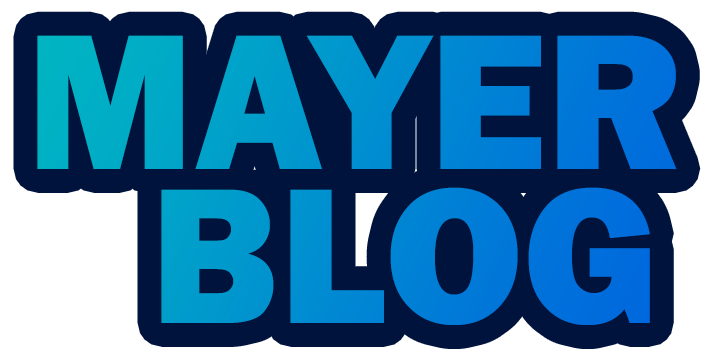Tenant screening is one of the most crucial steps in managing a successful rental property. Selecting the right tenant can help ensure regular rent payments, minimise property damage, and reduce the risk of legal disputes. However, choosing the wrong tenant could result in unpaid rent, costly repairs, and a prolonged eviction process. To protect your investment, it’s essential to conduct thorough tenant screening and be aware of red flags that may indicate potential problems.

Here is a comprehensive guide to help landlords navigate the tenant screening process and identify warning signs that could spell trouble down the road.
1. Incomplete or Dishonest Rental Application
A tenant’s rental application is the first step in gathering important information about their financial situation and rental history. If the application is incomplete or contains vague answers, it could indicate that the applicant is hiding something.
Red Flag: Missing Information
If an applicant fails to provide key details, such as previous landlord references or employment history, it may be a sign that they are trying to cover up something negative, like an eviction or job instability. Always ensure that the application is fully completed and consistent.
Red Flag: Dishonest Information
Be on the lookout for discrepancies in the information provided. For example, if an applicant claims to have been employed in a certain job for two years but their reference says otherwise, this is a major red flag. A simple background check or verification call can quickly expose dishonesty.
2. Poor Credit History
A tenant’s credit history can reveal how responsible they are with managing their finances. While it’s normal for some applicants to have minor credit issues, significant debt or a history of missed payments could indicate that they may struggle to pay rent on time.
Red Flag: Low Credit Score
A very low credit score could signal financial instability, and tenants with a poor credit rating may have trouble paying rent consistently. It’s essential to review the details of their credit report, especially focusing on late payments, unpaid debts, or bankruptcies.
Red Flag: Multiple Defaults or Debt Collections
Applicants with multiple accounts in collections or a pattern of defaulting on loans or credit cards may be at risk of failing to meet their financial obligations, including rent payments. While some tenants may have valid reasons for poor credit, such as medical bills, it’s important to assess the situation carefully.
3. Unverifiable Employment or Income
A tenant’s ability to pay rent largely depends on their financial situation, so verifying employment and income is vital. Ideally, a tenant should earn enough to cover the rent and other living expenses comfortably, generally recommended at around three times the monthly rent.
Red Flag: Unstable Employment
Frequent job changes, long periods of unemployment, or unverifiable income sources can suggest that the tenant may struggle to pay rent consistently. It’s important to verify employment directly with the employer and ask for recent payslips to confirm income.
Red Flag: Cash Payments or Untraceable Income
If a tenant cannot provide formal proof of income and claims to be paid only in cash, this can be problematic. You’ll want to ensure the applicant has a reliable and legitimate source of income to avoid the risk of non-payment.
4. Negative References from Previous Landlords
References from previous landlords can provide valuable insight into a tenant’s rental history, including their behaviour, how well they maintained the property, and whether they paid rent on time. Always contact previous landlords to verify the tenant’s rental history and ask detailed questions.
Red Flag: Poor Rental History
If a previous landlord reports issues such as late payments, damage to the property, or complaints from neighbours, these should be taken seriously. Be especially cautious if a tenant has been evicted in the past.
Red Flag: Fake or Evasive References
Some applicants may try to provide fake landlord references, such as asking a friend to pose as their former landlord. Pay attention to vague or overly positive references, as they may not be genuine. Cross-checking the landlord’s contact details with public records can help verify their legitimacy.
5. Frequent Moves or Short-Term Tenancies
Tenants who frequently move or have a pattern of short-term tenancies may raise concerns about their stability. While some tenants may have valid reasons for moving frequently, such as job relocation, a history of short-term rentals without good cause could suggest an inability to commit or problems in their past rentals.
Red Flag: No Long-Term Rental History
If a tenant has a history of moving from property to property every few months, it could indicate that they are difficult to satisfy, have caused issues at previous rentals, or have had trouble paying rent on time. Always ask for an explanation of their rental history, and be cautious if they can’t provide a reasonable justification.
6. Criminal Background
Conducting a criminal background check is an important part of tenant screening to ensure the safety of your property and other tenants or neighbours. While some minor offences may not be a dealbreaker, violent crimes, drug-related offences, or property damage could pose a risk.
Red Flag: Serious Criminal Offences
Be cautious of applicants with a history of serious criminal behaviour, especially if it involves property damage, drug-related activities, or violence. A history of criminal activity could lead to future issues, including damage to your property or legal disputes.
Red Flag: Recent Criminal Charges
Even if the tenant doesn’t have a long criminal history, recent charges or ongoing legal troubles may be a sign that they are not the best fit for your property. Always evaluate these cases carefully and consider seeking legal advice if needed.
7. Inconsistent Communication or Delayed Responses
A potential tenant who is unresponsive or difficult to communicate with during the screening process could indicate problems down the line. Prompt and clear communication is essential for a good landlord-tenant relationship.
Red Flag: Delayed Responses or Missed Appointments
If an applicant is consistently late in responding to calls or emails, or if they fail to show up for viewings or meetings without notice, this could be a sign of future unreliability. Timeliness and communication are crucial traits for responsible tenants.
Red Flag: Vague or Evasive Answers
If a tenant avoids answering questions about their rental history, employment, or personal circumstances, this could be a sign they are hiding something. Always ask for clarification when necessary and be wary of applicants who seem evasive.
8. Unreasonable Demands or Complaints Before Moving In
If a tenant starts making unreasonable demands or has an excessive number of complaints before they’ve even signed a lease, it could be a sign that they will be difficult to manage.
Red Flag: Overly Demanding Behaviour
If an applicant is already asking for significant changes to the property or is being difficult during the viewing process, this could indicate that they may be a high-maintenance tenant. While some requests are reasonable, an excessive number of demands or complaints can be a sign of future conflict.
Tenant screening is one of the most important steps a landlord can take to protect their rental property and ensure a smooth renting experience. By carefully reviewing applications, checking references, and being mindful of red flags, you can reduce the risk of problem tenants and safeguard your investment. Remember that thorough screening helps not only to avoid issues but also to establish a positive, long-term relationship with your tenants.
Always trust your instincts and seek additional clarification or documentation if something doesn’t seem right. A little extra effort upfront can save you significant time, money, and stress in the long run.




